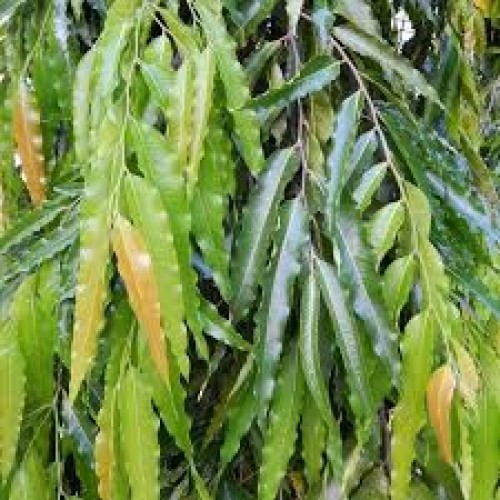60%
off
off
-
Sold
-

-

out
Ashoka Tree (Saraca asoca)
Botanical Features & Nature
- Scientific Name: Saraca asoca
- Common Names: Ashoka Tree, Sorrowless Tree
- Family: Fabaceae
- Origin: Native to the Indian subcontinent
- Growth Habit: Small, erect evergreen tree with dense foliage
- Leaves: Dark green, growing in dense clusters
- Flowers: Bright orange-yellow turning red before wilting; bloom from February to April
Care & Cultivation
- Sunlight: Prefers full sunlight or partial shade
- Soil: Well-drained, fertile soil
- Watering: Regular watering, especially during dry periods; ensure soil remains moist but not soggy
- Temperature: Thrives in warm and humid climates
- Fertilization: Apply balanced fertilizer every 6-8 weeks during the growing season
- Pruning: Prune to remove dead or diseased branches and promote healthy growth
Religious and Cultural Significance
- Hinduism: Associated with Kamadeva, the god of love; mentioned in the Ramayana as the tree under which Sita was held captive in Ashoka Vatika
- Buddhism: Believed that Queen M?y? gave birth to Buddha under an Ashoka tree in Lumbini
- Jainism: Revered as the tree under which Mahavira renounced the world
- Cultural Practices: Often planted near temples and used in religious ceremonies; symbolizes love, fertility, and prosperity
Medicinal and Environmental Benefits
- Medicinal Uses: Used in Ayurveda to treat gynecological problems, menstrual disorders, internal bleeding, and more
- Environmental Benefits: Enhances biodiversity and contributes to a healthy ecosystem
Advantages of Planting Ashoka Tree
- Low Maintenance: Requires minimal care once established
- Ornamental Value: Attractive foliage and fragrant flowers enhance the aesthetic appeal of gardens and landscapes
- Spiritual Significance: Offers a serene environment conducive to meditation and spiritual practices